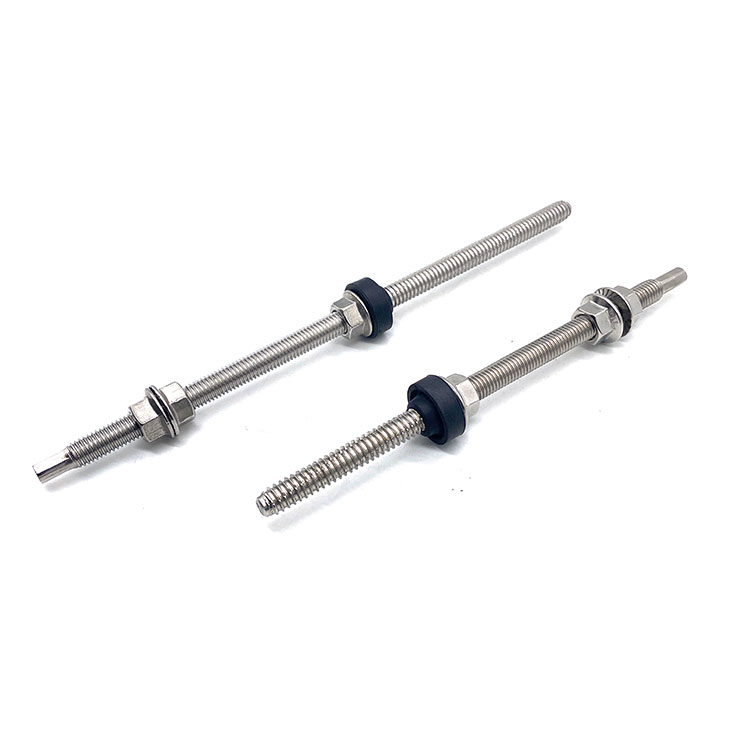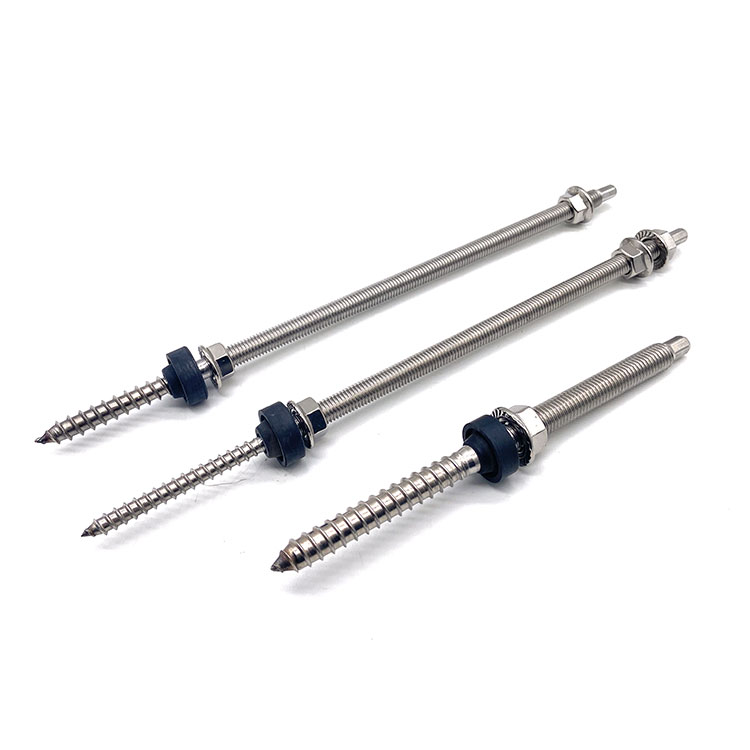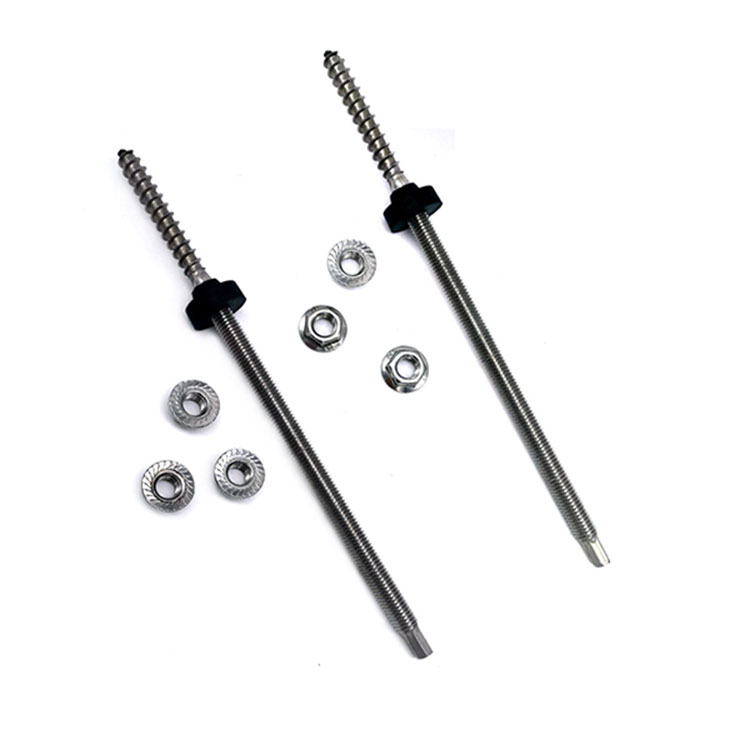How to Install a Hanger Bolt the Right Way for Long-Lasting Performance
2025-10-28
After working in the fastener industry for many years, I’ve installed more bolts and screws than I can count. One product I always recommend for secure, clean, and professional assembly is the Hanger Bolt from Gangtong Zheli Fasteners. Whether you’re mounting furniture legs, connecting wood to metal, or building solar panels, the hanger bolt is a simple yet powerful solution. But how do you install it correctly to get the best performance and safety? In this guide, I’ll walk you through every detail—from product specs to installation tips—so you can achieve professional results every time.
What Will You Learn in This Guide
-
What exactly is a hanger bolt and how does it work
-
What are the key parameters and material specifications
-
How to install a hanger bolt step by step
-
What common mistakes should be avoided during installation
-
What tools are required for correct installation
-
How to choose the right hanger bolt size and type
-
FAQs about hanger bolts
What Is a Hanger Bolt and How Does It Work
A hanger bolt is a dual-ended fastener with wood threads on one end and machine threads on the other. The wood-threaded end is designed to screw into wooden surfaces, while the machine-threaded end is used to attach a nut or metal component. This design allows you to connect wood, metal, or composite materials securely without visible screw heads.
In my experience, the Hanger Bolt from Gangtong Zheli Fasteners offers precise threading, corrosion resistance, and superior holding strength, which are critical for furniture manufacturing, solar brackets, wooden structures, and even mechanical assemblies.
What Are the Key Product Parameters of a Hanger Bolt
To ensure strength, safety, and long-term performance, we always advise clients to review the technical parameters before purchasing. Below is a professional table outlining standard specifications for Gangtong Zheli Fasteners hanger bolts.
| Parameter | Specification | Description |
|---|---|---|
| Material | Carbon Steel, Stainless Steel 304/316 | Ensures corrosion resistance and tensile strength |
| Surface Finish | Zinc-Plated, Hot-Dip Galvanized, Plain, Black Oxide | Protects against rust and improves appearance |
| Thread Type | Wood Thread / Machine Thread | Dual-function design for wood-to-metal joints |
| Diameter Range | M6 – M12 (¼″ – ½″) | Available for light to heavy-duty connections |
| Length Range | 40 mm – 200 mm (1½″ – 8″) | Suitable for various installation depths |
| Head Type | Headless Double-Ended | One side for wood, one side for nut/washer |
| Standard | DIN 976 / ANSI B18.2 | Ensures compatibility and quality |
| Tensile Strength | Up to 700 MPa (depending on material) | High-strength performance under load |
These parameters are verified during production and testing at our Gangtong Zheli Fasteners facility to ensure consistent quality.
How Do You Install a Hanger Bolt Step by Step
Over the years, I’ve found that correct installation is the key to long-term holding power. Here’s the method I personally use and teach to clients:
-
Mark and Pre-Drill the Hole
-
Use a drill bit slightly smaller than the wood-thread diameter (usually 1 mm less).
-
Drill the hole straight to the required depth.
-
-
Clean the Hole
-
Remove debris, sawdust, or moisture to prevent thread damage.
-
-
Install the Hanger Bolt into Wood
-
Use a double-nut method: screw two nuts onto the machine thread and tighten them together.
-
Use a wrench to rotate the lower nut to drive the wood thread into the material.
-
Make sure the bolt goes straight—angled installation weakens the grip.
-
-
Attach the Metal Part or Fitting
-
Once installed, remove the nuts from the machine-threaded end.
-
Mount your metal bracket, leg plate, or part and secure it with a washer and nut.
-
-
Check Tightness
-
Tighten securely, but don’t over-torque to avoid stripping the wood threads.
-
-
Optional Step for Heavy Loads
-
Apply epoxy or wood adhesive into the hole before inserting the bolt for stronger holding power.
What Tools Are Needed for Installation
| Tool | Purpose |
|---|---|
| Drill and Drill Bits | To create pilot holes |
| Wrench or Spanner | For tightening nuts |
| Double Nut (Two Hex Nuts) | To drive the hanger bolt into the wood |
| Measuring Tape | To mark the drilling depth |
| Level | To ensure proper alignment |
| Optional: Epoxy or Adhesive | For extra holding strength |
These are standard workshop tools—you don’t need specialized equipment to install hanger bolts properly.
What Common Mistakes Should You Avoid
After seeing countless installations over the years, I’ve noticed the same issues appear repeatedly. Avoiding these will save you time and prevent damage:
-
No Pilot Hole: This causes the wood to crack or the bolt to misalign.
-
Incorrect Hole Size: Too tight makes insertion difficult; too loose reduces grip.
-
Over-tightening: Strips threads or damages the wood.
-
Wrong Material Selection: Using carbon steel in outdoor environments leads to rust—choose stainless steel instead.
-
Incorrect Bolt Length: Always ensure at least 2/3 of the wood thread length is embedded.
How Do You Choose the Right Hanger Bolt
Selecting the right hanger bolt depends on your application. Here’s a guide we use at Gangtong Zheli Fasteners:
| Application | Recommended Material | Diameter | Surface Finish |
|---|---|---|---|
| Indoor Furniture | Carbon Steel | M6–M8 | Zinc-Plated |
| Outdoor Structures | Stainless Steel 304/316 | M8–M10 | Plain or HDG |
| Solar Mounting Systems | Stainless Steel 316 | M10–M12 | Plain |
| Wooden Beams / Heavy Loads | Carbon Steel | M10–M12 | Hot-Dip Galvanized |
| Machinery Assembly | Alloy Steel | M8–M10 | Black Oxide |
Choosing the correct parameters prevents premature failure and ensures proper load capacity.
What Are the Advantages of Gangtong Zheli Fasteners Hanger Bolts
As someone who’s worked with dozens of fastener suppliers, I can confidently say the consistency of our manufacturing process stands out. Our hanger bolts are:
-
Precision Threaded: Smooth threads ensure easy installation and tight fit.
-
Corrosion Resistant: Multiple coating options for indoor and outdoor use.
-
High Load Capacity: Tested under industry standards for tensile and shear strength.
-
Customizable: Available in special lengths, coatings, or materials upon request.
-
Factory Certified: ISO-compliant production and strict QC inspection.
What Frequently Asked Questions Do Customers Have
Q1. Can I use hanger bolts on metal surfaces?
A: Hanger bolts are mainly for wood or composite materials. For metal surfaces, consider a through-bolt or threaded insert.
Q2. How do I remove a hanger bolt once it’s installed?
A: Use two nuts tightened together and unscrew the bolt counterclockwise with a wrench.
Q3. What size pilot hole should I drill?
A: It should be about 85–90% of the root diameter of the wood thread.
Q4. Can I reuse hanger bolts?
A: Yes, if the threads are intact and not corroded. Always inspect before reuse.
Q5. What’s the difference between a hanger bolt and a lag screw?
A: A lag screw has a head for direct driving; a hanger bolt is headless and allows nut attachment on the exposed end.
Why Proper Installation Matters for Safety and Durability
Incorrect installation doesn’t just reduce strength—it can cause structural failures, loosening over time, or corrosion issues. Properly installed hanger bolts distribute load evenly, resist vibration, and maintain long-term joint stability. This is especially vital in outdoor furniture, solar panels, and construction projects where wind, temperature, and humidity vary.
Ready to Start Your Project with Reliable Hanger Bolts
At Gangtong Zheli Fasteners, we don’t just manufacture bolts—we help customers install them right. If you’re working on furniture, solar mounting, or structural projects and need durable Hanger Bolt solutions, our team can recommend the right specifications for your needs.
Contact us today to get a free quote, technical datasheet, or expert guidance from our experienced team. Let’s make your project stronger, safer, and built to last.





